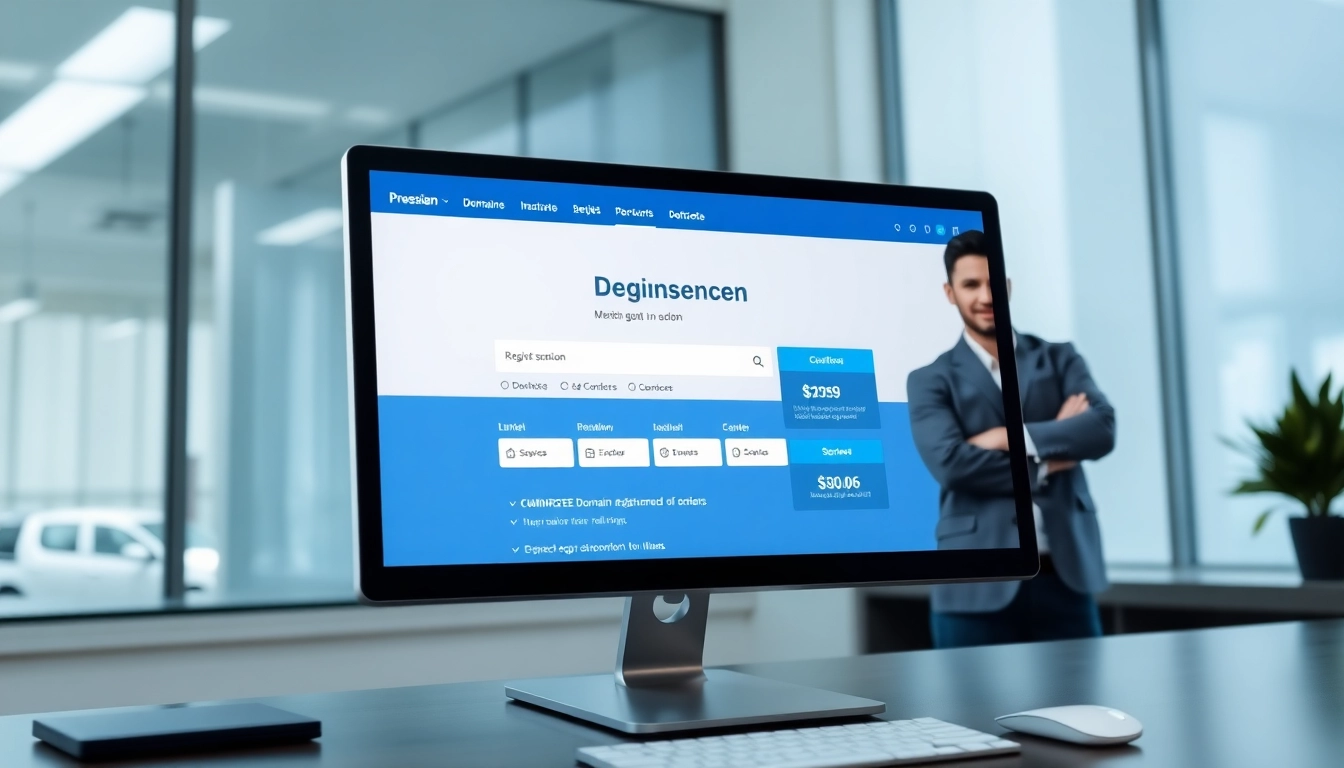In the fast-evolving world of digital commerce and business operations, the connective tissue is user experience, intelligent automation, and precise market understanding. Techdee’s coverage spans UX design, AI-driven processes, customer interactions, and the design of robust go-to-market moves. This article synthesizes those threads into a practical blueprint for teams seeking measurable improvements in clicks, conversions, and customer satisfaction. The goal is to deliver actionable guidance that translates complex concepts into repeatable outcomes, so organizations can move from theory to measurable performance with confidence.
From optimizing checkout flows to deploying privacy-conscious AI and leveraging segmentation intelligence, organizations can align technology with human-centered outcomes. This alignment requires a disciplined approach: defined goals, credible data, iterative experimentation, and governance that safeguards customer trust. In the pages that follow, we explore how technology-enabled strategies translate into real-world gains, with steps, metrics, and proven patterns that leaders can adopt today to outperform competitors.
What Makes Customers Click: Unlocking Better UX and Checkout Experiences in E-commerce
Understanding user intent and friction points in technology-enabled carts
Successful e-commerce UX starts with empathy for the shopper’s journey. Understanding user intent is less about guessing what a visitor wants and more about mapping the decision moments that determine whether a session becomes a sale. This begins with an objective, multi-method audit of the cart funnel:
- Qualitative discovery: user interviews and contextual inquiries to surface hidden frictions—unclear pricing, ambiguous shipping terms, or complex form fields.
- Quantitative analytics: funnel drop-off rates by stage, average time in each step, and device- or region-based performance variances.
- Behavioral signals: heatmaps, scroll depth, and click-path analysis to identify where users hesitate or misinterpret on-page elements.
In practice, teams codify this into a friction map that combines cart events with user intent signals (e.g., product comparison, price sensitivity, shipping urgency). A practical approach is to perform quarterly funnel reviews, pairing data with qualitative insights to validate or challenge prevailing assumptions. The outcome is a prioritized backlog of improvements tied to a clear impact hypothesis—for example, “reducing form fields by 40% will lift checkout initiation by 15%.”
Design patterns that accelerate checkout and build trust
Checkout design is a high-leverage area where small UX changes yield outsized results. The following patterns have repeatedly demonstrated impact when implemented with care for accessibility and performance:
- Guest checkout and progressive disclosure: Allow quick entry to purchase with optional account creation later, while preserving essential data for future visits.
- Inline validation and real-time feedback: Validate fields as users type, providing helpful cues rather than generic error messages.
- Autofill and smart defaults: Leverage secure autofill for address and payment details, reducing manual entry without compromising privacy.
- Persistent cart and auto-save: Ensure carts migrate across devices and revisit sessions seamlessly, so users can complete purchases on their preferred channel.
- Transparent security cues: Visible security badges, clear privacy policies, and real-time order risk indicators that reassure without interrupting flow.
- Checkout progress indicators: A clear, linear journey with a minimal number of steps helps reduce cognitive load and abandonment risk.
- Contextual trust signals: Social proof, return policies, and price guarantees presented at decisive moments to mitigate hesitation.
For implementation, create a dedicated checkout optimization squad, define a test plan for each pattern, and pair experiments with performance dashboards. A practical roadmap might include a 6–8 week sprint cycle to pilot one pattern at a time, followed by broader rollout based on measured lift in conversion rate and cart value.
How to measure impact: conversion, abandonment, and speed metrics
Measuring the impact of UX and checkout improvements requires a disciplined metrics framework. Core KPIs should be tracked at the product, funnel, and experience level, with clear baselines and targets:
- Conversion rate (CVR): The percentage of sessions that result in a completed purchase. This should be tracked by device, geography, and traffic source to reveal nuanced performance stories.
- Cart abandonment rate: The proportion of initiated carts that never complete checkout. A decreasing trend indicates friction reduction or better alignment with shopper intent.
- Checkout time and click density: Time to complete a purchase and the number of interactions required. Reductions here correlate with faster path-to-purchase and improved satisfaction.
- Page load and render speed: Core web vitals like LCP (largest contentful paint), CLS (cumulative layout shift), and TBT (total blocking time). Performance drives user patience, especially on mobile networks.
- Error rate and form abandonment: Frequency of validation errors and abandoned fields, enabling targeted form optimization.
- Post-purchase satisfaction: CSAT/NPS scores and qualitative feedback captured after checkout to gauge trust and long-term loyalty.
To turn metrics into action, implement a measurement plan that includes: an initial baseline (3–6 weeks), a randomized control period (A/B tests), and a post-test review with a decision log. Visualization should emphasize trend lines and confidence intervals so stakeholders can interpret results without overinterpreting noise. The ultimate success criterion is a sustained lift in CVR or order value without sacrificing user satisfaction or accessibility.
Practical case study: a mid-market retailer’s checkout revamp
A retailer with a product catalog in the $50–$400 range faced 18% cart abandonment and a 1.8% CVR. The team launched a staged optimization plan: (1) enabled guest checkout and reduced required fields from 8 to 4, (2) integrated inline error messaging and autofill for address data, (3) added a progress indicator and trust cues, and (4) tested a one-tap payment option on mobile. Over eight weeks, CVR rose to 2.6% and the checkout abandonment rate dropped to 12%, while AOV rose by 6% due to improved cross-sell messaging during the checkout flow. The project delivered a 28% uplift in checkout completion rate and a measurable reduction in cart recovery costs. This example illustrates how disciplined UX patterns, applied with rigorous measurement, can translate into real revenue impact while preserving shopper trust.
AI Deployment in Business Operations: Practical Technology Use Cases
Automating customer support and logistics with AI
Artificial intelligence can reshape operations by automating routine tasks, accelerating issue resolution, and enabling proactive service. A typical AI deployment in customer support and logistics includes a layered stack:
- Self-service and intelligent routing: AI-driven chatbots handle common inquiries, triage tickets, and route complex issues to human agents with context preserved.
- Co-browsing and knowledge retrieval: Context-aware assistants guide users through troubleshooting or order tracking, using structured knowledge bases and dynamic FAQs.
- AI-powered logistics optimization: Real-time demand forecasting, inventory optimization, and route planning reduce stockouts and shorten delivery times.
- Sentiment-aware escalation: AI monitors conversation tone and urgency, triggering human intervention when customer dissatisfaction indicators exceed thresholds.
Implementing such a stack requires careful data governance and integration with existing CRM, OMS, and helpdesk tools. A successful approach begins with a minimal viable product (MVP) that handles a narrow set of use cases, then scales to more complex scenarios once performance targets are met. Real-world results often include reductions in first-response time, higher self-resolution rates, and improved agent productivity, with AI assets learning from ongoing interactions to increase effectiveness over time.
Governance, ethics, and data privacy in AI implementations
AI in business operations must be designed with governance and ethics at its core. Establishing a governance charter early helps teams navigate risk and compliance while maintaining customer trust. Key pillars include:
- Data minimization and retention: Collect only what is necessary for the task, and define retention policies aligned with regulatory requirements.
- Explainability and transparency: Provide clear explanations for automated decisions where practical (e.g., why a ticket was escalated or a delivery ETA was adjusted).
- Bias mitigation: Regular audits to identify and correct biased outcomes in routing, recommendations, or pricing.
- Security and privacy: Robust access controls, encryption of data in transit and at rest, and regular security testing of AI components.
- Accountability and incident response: Define ownership, escalation paths, and remediation steps for any AI-driven error or privacy incident.
Operations leaders should institutionalize an AI governance framework that includes a cross-functional steering committee, regular risk reviews, and an audit cadence. This framework facilitates responsible innovation while safeguarding customer rights and business integrity. Also essential is documenting policy decisions, updating privacy notices, and communicating changes to customers in clear, accessible language.
Key performance indicators for AI-driven efficiency and growth
Measuring AI impact goes beyond cost savings. A balanced scorecard for AI-driven initiatives includes process efficiency, customer outcomes, and strategic value. Recommended KPIs include:
- Automation rate: Percentage of repetitive tasks handled by AI without human intervention.
- Mean time to resolution (MTTR): Time taken to resolve customer inquiries after AI triage.
- First contact resolution (FCR): Share of issues resolved on initial interaction, a proxy for AI helper effectiveness.
- Accuracy and reliability: Quality metrics for AI decisions, including error rates and confidence scores.
- Cost per interaction: Comparative cost of handling requests with AI vs. human agents.
- Customer experience metrics: CSAT and NPS changes attributable to AI-assisted interactions.
- Operational throughput: Volume of requests processed per hour or per day, with scalability indicators as volumes grow.
To maximize AI value, organizations should align KPIs with customer outcomes and financial objectives. A phased measurement plan—starting with process metrics (speed, accuracy), followed by experience metrics (satisfaction, trust), and finally financial metrics (costs, revenue impact)—ensures clarity about where AI adds value and where enhancement is required.
Transforming Customer Interactions with Technology for Better Outcomes
Omni-channel integration and seamless transfers between touchpoints
Omni-channel strategies recognize that customers interact with a brand across multiple channels—web, mobile, social, email, phone, and in-person. A truly seamless experience requires a unified customer view and consistent capabilities across channels. Implementing omni-channel excellence involves:
- Unified data layer: A single source of truth for customer profiles, orders, preferences, and interactions to ensure continuity as customers switch channels.
- Cross-channel orchestration: Event-driven workflows that trigger appropriate actions based on a customer’s path, such as sending a geo-targeted offer after a store visit or aligning order status across channels.
- Consistent capabilities: Uniform checkout, returns, and support experiences across devices to avoid confusion and friction.
- Measurement coherence: Cross-channel attribution models that fairly credit each touchpoint’s contribution to conversion and loyalty.
Building an effective omni-channel stack demands architectural discipline—microservices, event streaming, and API-first design—to support fluid data exchange and rapid feature delivery. Over time, this approach yields higher customer satisfaction, reduced duplication of effort, and better resource utilization across sales, marketing, and service teams.
Personalization at scale using data signals
Personalization is not a one-off tactic; it is an ongoing capability that leverages real-time signals to tailor experiences at the individual level. The most successful implementations balance depth of insight with system performance and privacy compliance. Practical steps include:
- Signal collection: Capture explicit preferences (e.g., wishlist items, price sensitivity) and implicit signals (browsing history, search terms, time on page) in a privacy-conscious manner.
- Real-time inference: Use lightweight models or rule-based engines to generate recommendations, promotions, and content personalized to the user’s current context.
- Content and product targeting: Dynamically populate PDPs, homepages, and emails with relevant products and offers that align with user intent and lifecycle stage.
- Experimentation and governance: A/B tests and multi-armed bandits to optimize personalization strategies while monitoring fairness and privacy boundaries.
When executed well, personalization increases engagement, boosts conversion, and enhances loyalty by delivering meaningful experiences without overwhelming users with irrelevant content. A practical guideline is to start with a few high-impact signals, measure impact on key outcomes (CVR, AOV, repeat visits), and scale iteratively as results stabilize.
Balancing automation and human touchpoints
Automation brings speed and consistency, but human insight remains essential for nuanced interactions, empathy, and complex problem-solving. The challenge is to design touchpoints where automation handles routine tasks and humans step in when context or judgment is required. Techniques include:
- Smart escalation: Automated triage routes only when confidence is high; otherwise, route to a human with complete context to reduce back-and-forth.
- Agent assist tools: AI-powered dashboards that summarize prior interactions, gather relevant data, and suggest responses, enabling agents to resolve issues faster and with higher quality.
- Hybrid chat experiences: Combine bot efficiency with human warmth by offering a seamless handoff and providing users the option to switch channels or agents mid-conversation.
Effective balance requires governance around automation levels, clear escalation criteria, and ongoing monitoring of customer sentiment. The aim is to preserve personalization and trust while capitalizing on automation’s efficiency gains. Organizations that calibrate automation with human oversight often achieve higher CSAT and lower average handling times than those leaning too heavily in either direction.
STP in Action: Technology-Backed Segmentation to Precise Positioning
Segmenting audiences with data-driven tech tools
Segmentation is the foundation of precise positioning. Modern segmentation leverages a combination of demographic, behavioral, and psychographic data, enriched by predictive analytics and machine learning. A practical approach includes:
- Data integration: Consolidate first-party data across web, app, CRM, and offline sources into a unified data platform.
- Behavioral segmentation: Group users by actions (purchase frequency, product categories, browsing patterns) to reveal micro-segments with distinct needs.
- RFM and propensity scoring: Use Recency, Frequency, Monetary value, and predictive models to identify high-value customers and those at risk of churn.
- Ethical considerations: Ensure segmentation respects privacy preferences and avoids discriminatory outcomes; document segmentation logic for transparency.
The goal is to create segments that are actionable for product, marketing, and sales teams, enabling targeted messaging, offers, and experiences that resonate with each group’s priorities and constraints.
Targeting strategies powered by predictive analytics
Predictive analytics amplifies targeting precision by estimating future behaviors and needs. Practical targeting frameworks include:
- Look-alike modeling: Identify segments similar to your best customers and extend reach through paid and organic channels.
- Propensity-to-purchase scoring: Prioritize outreach to users most likely to convert within a defined horizon, aligning messaging with their likely needs.
- Churn risk forecasting: Detect signals of disengagement and trigger proactive re-engagement campaigns or product improvements.
- Lifetime value optimization: Allocate resources to high-LTV cohorts and optimize pricing, bundles, and loyalty programs accordingly.
Implementation requires robust data governance, feature engineering (e.g., recency of last interaction, product affinity metrics), and continuous model monitoring to guard against drift. The payoff is higher campaign efficiency, improved ROAS, and more resilient growth across market cycles.
Positioning maps and messaging experiments that win
Positioning is how you communicate value in a crowded marketplace. Visualize positioning on maps that compare products or brands along axes that reflect customer priorities (for example, price sensitivity vs. quality emphasis, or speed vs. customization). Use these maps to guide messaging experiments that test how you convey differentiation. A practical workflow involves:
- Map construction: Define two or three axes aligned with customer concerns; plot current offerings and competitors to identify gaps.
- Messaging hypotheses: Formulate statements that articulate how your product uniquely addresses the axes’ priorities.
- Experiment design: Run A/B tests or multivariate tests on landing pages, ads, and product descriptions to compare message variants.
- Performance review: Evaluate impact on CVR, engagement, and recall, iterating until you converge on a positioning that delivers consistent advantage.
Positioning is not a static exercise; it evolves with market dynamics and customer expectations. The most successful brands maintain a living set of positioning hypotheses, tested and refined through rigorous experimentation and data-driven learning.
Emerging Design and Coding Trends: Multi-Language Tech Skills for Interviews
Why multilingual coding matters in technology interviews
In a landscape where teams often operate across platforms, languages, and stacks, multilingual coding skills translate into faster collaboration, better problem-solving, and greater adaptability. Benefits include:
- Cross-pollination of ideas: Learning multiple paradigms (object-oriented, functional, scripting) expands problem-solving approaches.
- Resilience in dynamic tech environments: Quick pivoting when adopting new languages or frameworks reduces ramp-up time for new projects.
- Improved tool selection: Knowledge of language strengths informs architecture decisions and performance optimizations.
For interview readiness, emphasize a portfolio of projects that demonstrate proficiency in at least two languages relevant to your target roles, along with an ability to translate requirements into design and code with robust testing and documentation practices.
Showcasing projects and testing frameworks for tech roles
A compelling interview-ready portfolio includes:
- Project diversity: Microservices, front-end applications, data processing pipelines, or AI-enabled features that illustrate end-to-end thinking.
- Code quality demonstrations: Clear repository structure, tests (unit, integration, end-to-end), and CI/CD automation that ensures reliable delivery.
- Testing frameworks and methodologies: Emphasize test-driven development (TDD), behavior-driven development (BDD), and performance testing to show discipline and rigor.
- Documentation and collaboration: READMEs, design documents, and notes that explain trade-offs, assumptions, and collaboration with teammates.
In interviews, be prepared to discuss design decisions, trade-offs, and how you would approach future enhancements, including scalability, security, and maintainability. The strongest candidates articulate their thinking through concrete examples, code snippets (as allowed), and demonstrations of testing discipline.
Budget-friendly hiring tips for designers and developers
Hiring great design and development talent without breaking the bank is possible by combining strategic sourcing with practical evaluation. Consider:
- Portfolio-driven hiring: Prioritize visible outcomes, problem-solving approaches, and measurable impact over theoretical knowledge alone.
- Structured problem-solving assessments: Real-world tasks that mirror daily work, with clear success criteria, help you compare candidates fairly.
- Open-source and community contributions: Value contributions to OSS projects, design systems, and collaborative initiatives as evidence of practical capability.
- Flexible engagement models: Explore contract-to-hire, part-time arrangements, or internship programs to build pipelines while controlling costs.
Budget-sensitive hiring doesn’t mean compromising on quality. By aligning evaluation with actual business needs, teams can identify versatile professionals who can contribute across multiple domains—from UX design to frontend development or data engineering—without inflating the headcount budget.













